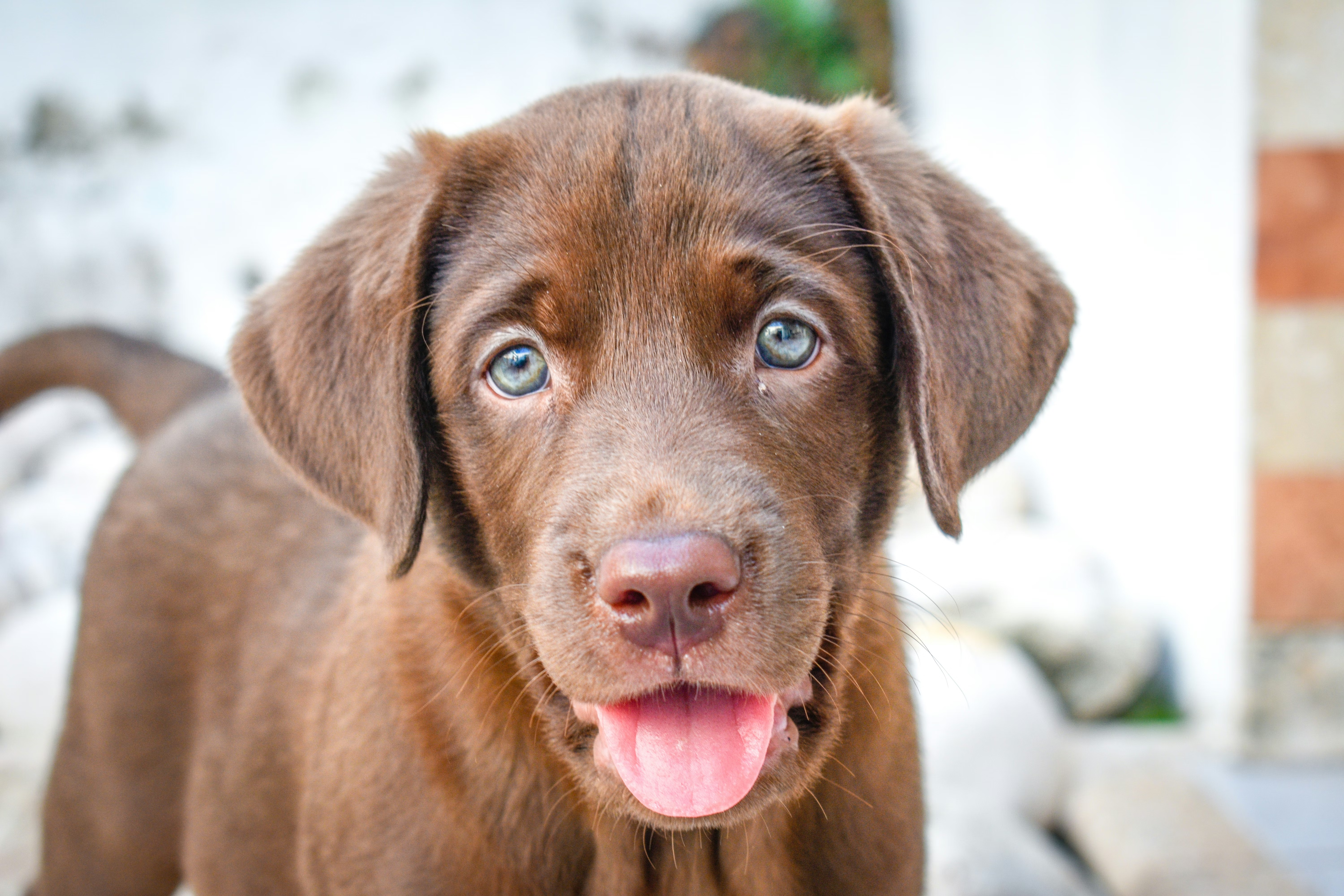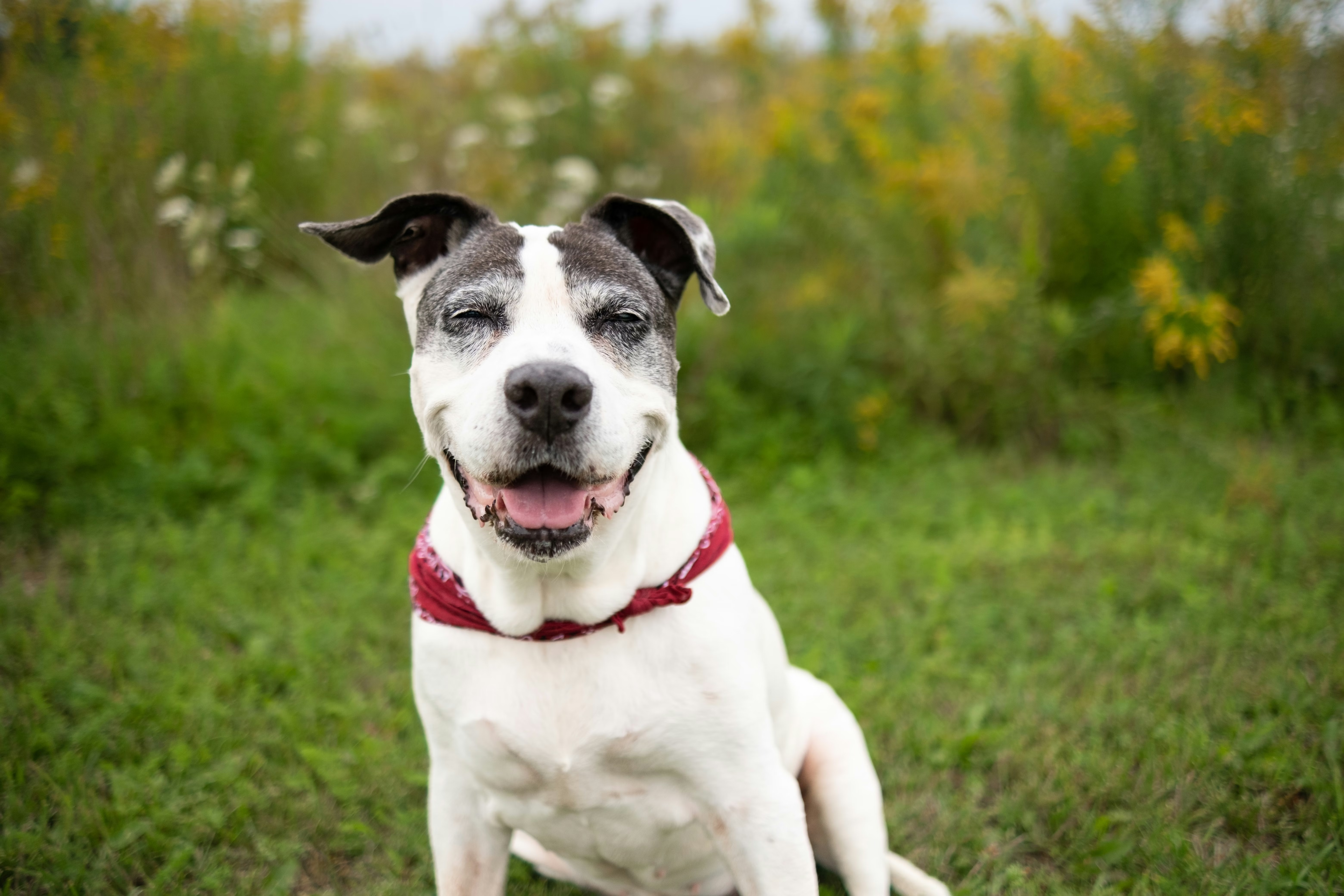While any breed or mixed breed can face health challenges, some issues are more common in certain large and giant breed dogs. Some of these conditions have a genetic component, while others may be influenced by lifestyle or environment. Awareness and proactive management will help you take the best possible care of your furry friend. Because the more you know, the better you can tailor the care you give to your dog.
Common large dog health issues
Obesity
Obesity in dogs is not just a matter of extra weight. It’s also a serious health condition that can lead to issues including joint problems, shortened life span, and difficulty breathing efficiently. Any breed is at risk for obesity, with breeds such as Labrador Retrievers, Golden Retrievers, and Boxers among the large breed dogs prone to obesity. In fact, Labrador Retrievers and Flat-coated Retrievers may carry a genetic mutation in the POMC gene that is associated with increased appetite and obesity. Wisdom Panel Premium screens for this genetic variant.
Obesity is easier to prevent than it is to treat. To keep your pup at a healthy weight:
- Work with your veterinarian on a nutrition plan that’s right for your dog’s health and life stage
- Consider a diet made for large breed dogs, which often includes nutraceuticals to support healthy joints
- Avoid “all stage” diets, which are often higher in calories
- Stick to a feeding schedule and use a food scale or measuring cup to portion out your their food
- Track their treats and make sure they account for no more than 10% of their daily calories
- Weigh your dog regularly so you notice changes sooner when they are easier to course correct
- Ensure your dog gets daily exercise and play sessions
With a balanced diet, regular exercise, and, in some cases, genetic testing to understand their predisposition to obesity, you can help your dog maintain a healthy weight.

Hip or elbow dysplasia
Hip and elbow dysplasia are degenerative conditions resulting from the malformation of the hip or elbow joint, respectively. Over time, this malformation leads to a poor fit between the joint and the socket, causing wear and tear, pain, and eventually, arthritis. Genetics play a significant role, with certain large breeds being more predisposed. Rapid growth rates and large body size can exacerbate the condition. Any loss of joint health is also more noticeable in a large breed dog as those joints support much more weight.
Breeds predisposed to hip dysplasia include:
Breeds predisposed to elbow dysplasia include:
- Chow Chow
- Rottweiler
- English Bulldog
- Boerboel
- Fila Brasileiro
- Neapolitan Mastiff
- Otterhound
- Black Russian Terrier
Signs of dysplasia include noticeable limping, difficulty getting up, reluctance to exercise or climb stairs, and visible discomfort during or after movement. Luckily, there are things you can do to help prevent the progression of this condition, including:
- Consult your veterinarian on the best time to neuter your dog based on their breed
- Feeding puppies a diet formulated for large breed dogs, which helps prevent them from growing too quickly
- Maintaining a healthy weight to reduce joint stress
- Considering joint supplements such as glucosamine, hyaluronic acid, chondroitin
- Surgical interventions in severe cases
Arthritis
Arthritis involves chronic inflammation in the joints, leading to pain, stiffness, and decreased mobility. It’s often a consequence of wear and tear on the joints, either from age, joint malformations like dysplasia, or injury. Large breed dogs are particularly susceptible due to their size and weight. Though common in older dogs of all sizes, arthritis should be treated aggressively in large breed dogs, as it commonly reduces quality of life as they age.
Similar to hip dysplasia, signs of arthritis include limping, difficulty with stairs, a noticeable decrease in activity level, and stiffness. Ways to minimize the risk and impact of arthritis include:
- Keeping your dog at a healthy weight
- Using anti-inflammatory medications and joint supplements
- Physical therapy or acupuncture
- Low impact aerobic exercise to maintain healthy muscle mass
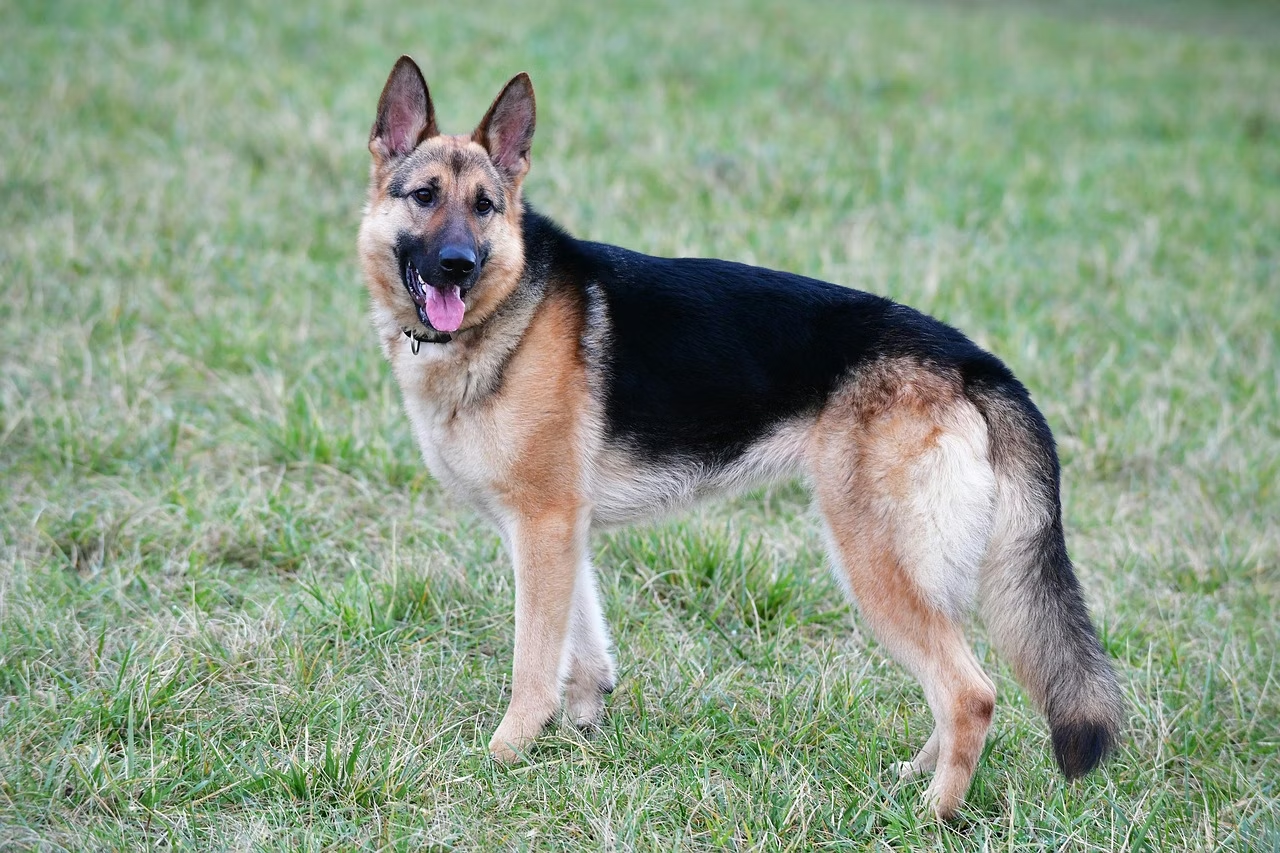
Bloat (Gastric Dilation Volvulus)
Bloat and gastric dilation volvulus—also known as "twisted stomach"—is a rapid-onset, life-threatening condition where the stomach fills with gas and twists on itself, cutting off blood flow. The exact cause isn’t always known, but risk factors include genetics, eating habits, and the dog’s conformation. Dogs that weigh 99 pounds or more have roughly a 20% chance of bloat—a risk that increases as they age. Additionally, dogs who have family members who have bloated are also at increased risk.
Deep-chested large breeds are at the greatest risk of bloat. These include :
If your dog is experiencing bloat, immediate veterinary intervention is critical. Signs to look for include a swollen, hard abdomen, signs of distress such as panting or drooling, or attempts to vomit without bringing anything up.
To reduce the risk of bloat, consider the following:
- Feed smaller, more frequent meals
- Refrain from vigorous exercise immediately after meal times
- Use an elevated food bowl specially designed to slow down eating
- If recommended by a veterinarian, preventive surgery (gastropexy)
Cancer
Some large breed dogs have a higher risk of certain cancers, including hemangiosarcoma, a cancer affecting the blood vessels, lymphoma, and osteosarcoma, a type of bone cancer. These cancers can be aggressive and are often discovered and diagnosed at an advanced stage.
Some of the large and giant breed dogs with a predisposition to cancer include:
Early diagnosis typically allows for more treatment options. Regular veterinary exams are your best means for catching cancer early.
If your dog is diagnosed with cancer, treatment options may include surgery to remove tumors, chemotherapy, and radiation. Palliative care may also be chosen to maintain quality of life, although most dogs tolerate chemotherapy and radiation therapy remarkably well.
Dilated Cardiomyopathy
Dilated cardiomyopathy (DCM) is a disease characterized by a thinning and weakening of the heart muscle that decreases its ability to effectively pump blood. As the disease progresses, the heart becomes enlarged and signs of congestive heart failure may develop. DCM can be secondary to infections or other conditions, and there is also suggestion that boutique, exotic, and grain-free diets may predispose dogs to DCM. However, in many cases, it is likely genetic. Doberman Pinschers, Great Danes, Boxers, and Cocker Spaniels are predisposed to this disease, although any breed can be affected. Thankfully, genetic tests have been developed to help reduce or prevent risk of DCM development, including Dilated Cardiomyopathy (discovered in the Schnauzer) in our Wisdom Panel Premium product.
Signs of DCM may not be apparent until the disease has progressed, so regular veterinary check-ups are crucial for early detection. However, symptoms to be aware of include:
- Weakness
- Lethargy
- Coughing
- Difficulty breathing
- Sudden collapse
Unfortunately there’s no cure for DCM, but early detection and management with medications may improve quality of life and prognosis. Lifestyle adjustments and specialized diets may also be recommended by your veterinarian
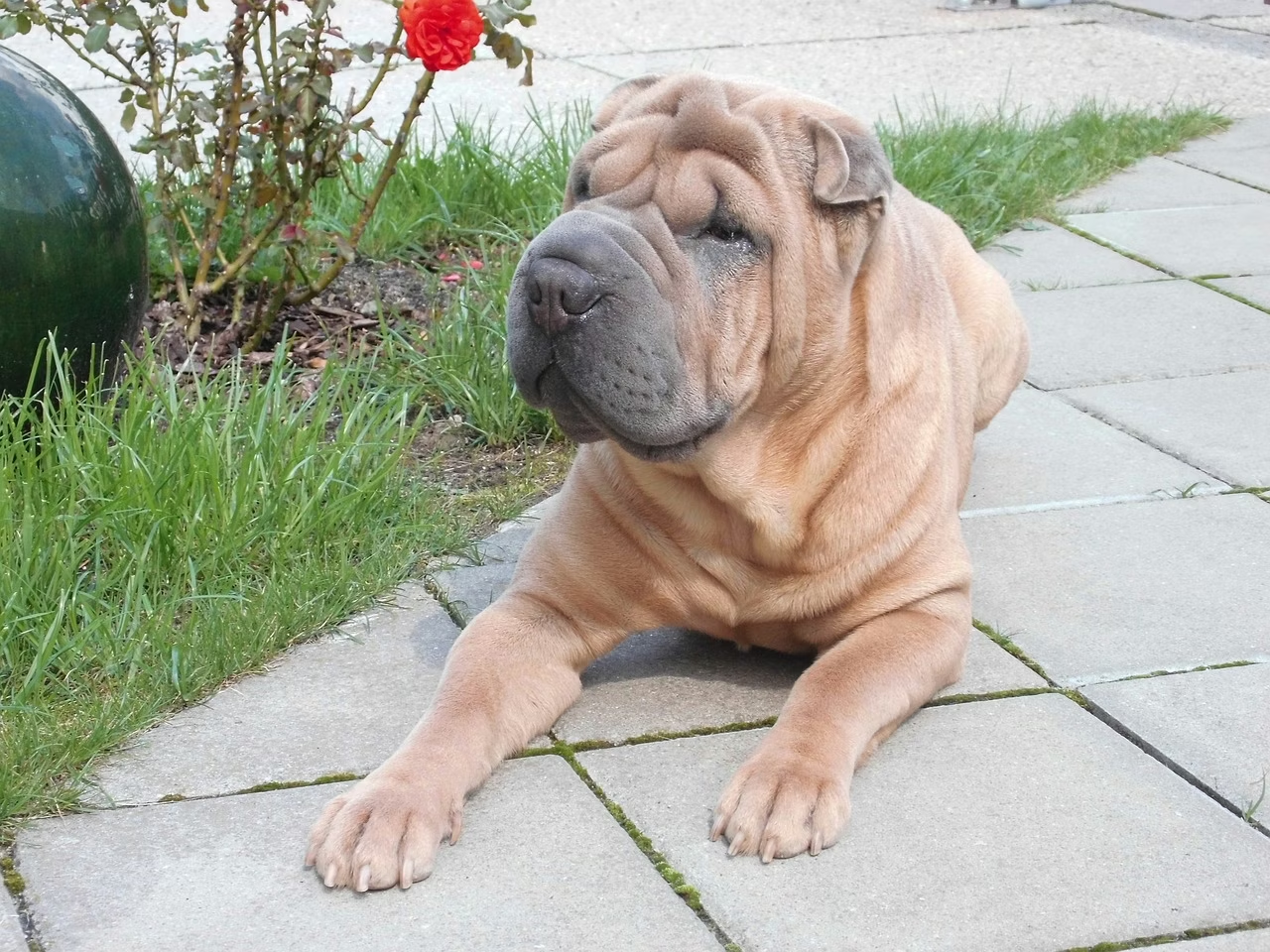
Entropion
Entropion is an eye condition where the eyelid folds inward, causing the eyelashes and skin to rub against the cornea. This can lead to irritation, ulcers, and vision impairment. The condition is often hereditary, disproportionately affecting breeds with pronounced facial wrinkles or loose skin, such as Shar Peis, Mastiffs, Chow Chows, and Saint Bernards.
Signs of entropion include:
- Squinting
- Excessive tearing
- Redness
- Pawing at the eyes
Surgical correction is usually necessary to prevent long-term damage to the eye.
Cruciate ligament tears
A cranial cruciate ligament tear in dogs is akin to an ACL tear in humans. The condition is characterized by a tear in one or more of the internal knee ligaments that stabilize the joint, leading to pain, lameness, and arthritis if left untreated. It can result from sudden injury, but it is much more often seen as a gradual tearing of the ligament in dogs. The shape of the joint, as well as the health of the connective tissue of the ligament are suspected to play a role, and there is likely a genetic component of risk. Large, active breeds are particularly susceptible, especially if they are overweight. Many dogs who tear a cruciate ligament go on to tear the cranial cruciate ligament in their other hind limb, again pointing to a predisposition, rather than trauma, as the cause.
Signs of a cruciate ligament tear include:
- Sudden lameness in one hind leg
- Chronic intermittent lameness in a hind leg (partial tear)
- Swelling around the knee
- Reluctance to put weight on a hind leg
- Sitting with a leg out instead of knees flexed
Weight management and controlled exercise can help decrease risk, but unfortunately, cruciate ligament tears cannot be prevented entirely. Treatment for cruciate rupture often involves orthopedic surgery, followed by rehabilitation. Your veterinarian can diagnose this condition and recommend which type of surgery is best depending on your pet’s activity level and lifestyle.
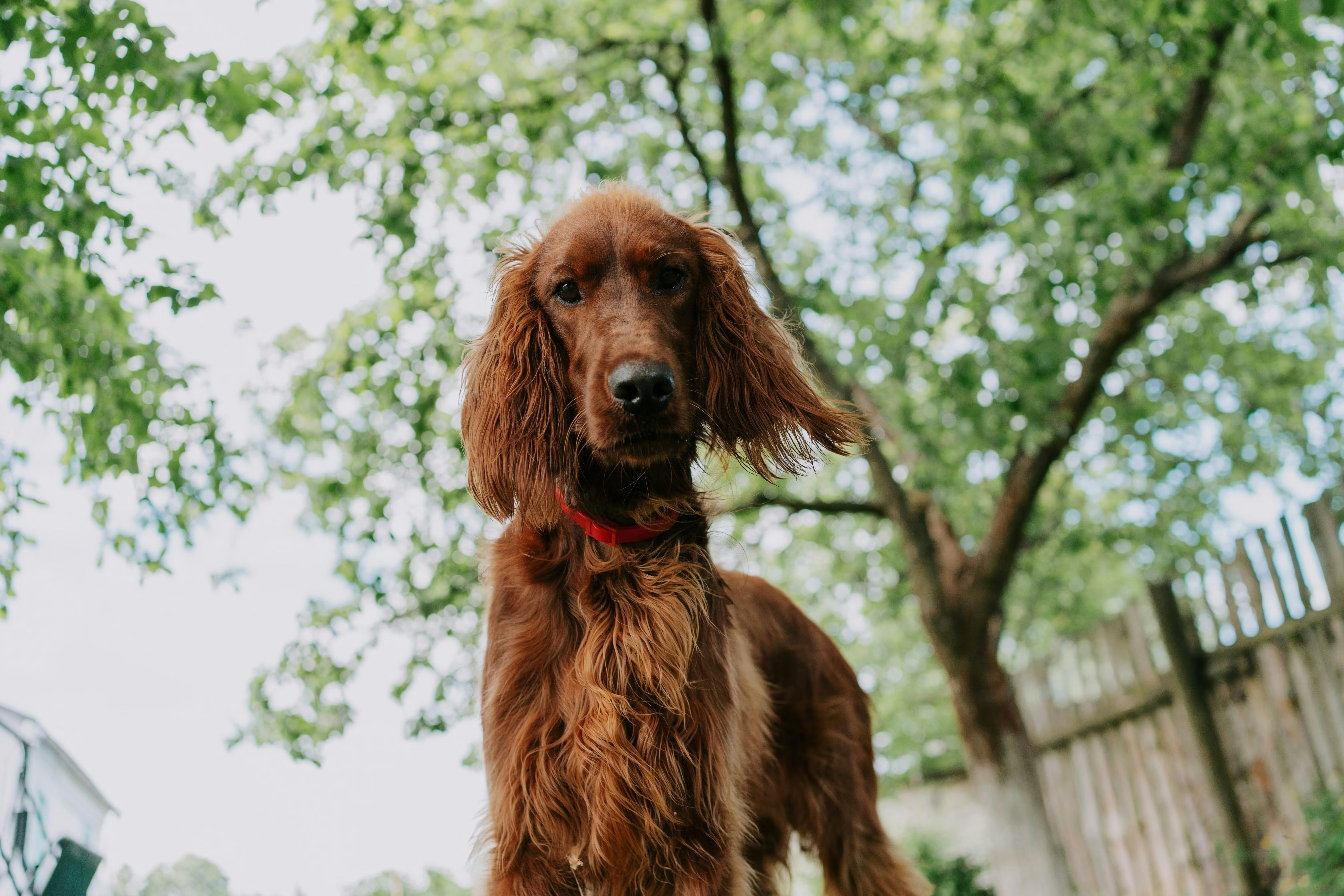
Von Willebrand’s Disease Type I
Von Willebrand’s Disease Type I is a genetic disorder that affects the blood’s ability to clot, which can lead to excessive bleeding with injury or surgery.. There are three known forms, and type 1 is the most common and least clinically severe. It’s the most common inherited blood disorder in dogs. While there’s no cure, it can be managed with careful planning for surgeries or procedures that may cause bleeding.
Large breeds predisposed for Von Willebrand disease include:
- Doberman Pinscher
- Standard Poodle
- Bernese Mountain Dog
- Irish Setter
- German Wirehaired and German Shorthaired Pointer
- Stabyhoun
Signs of Von Willebrand’s Disease Type I include excessive bleeding from minor wounds, or surgical sites,nosebleeds, bleeding gums, or blood in the stool. Wisdom Panel Premium also includes genetic screening to identify if your dog is a carrier or at risk for this disease.
Final thoughts
Awareness and early detection are key in managing and treating these common health conditions in large breed dogs. Regular veterinary check-ups, proactive care, and genetic testing where applicable can help identify risks early on.
Additional resources
- https://www.ncbi.nlm.nih.gov/pmc/articles/PMC5325577/
- https://www.sciencedirect.com/topics/neuroscience/proopiomelanocortin#:~:text=The%20pro%2Dopiomelanocortin%20(POMC),the%20adrenocortical%20response%20to%20stress
- https://wearethecure.org/blog/dog-breeds-prone-to-cancer/
- https://optimal-selection.com/pages/dcm-in-dobermans
- https://www.vet.cornell.edu/departments-centers-and-institutes/riney-canine-health-center/health-info/von-willebrand-disease
- https://tploinfo.com/blog/what-dog-breeds-are-prone-to-acl-injuries/


